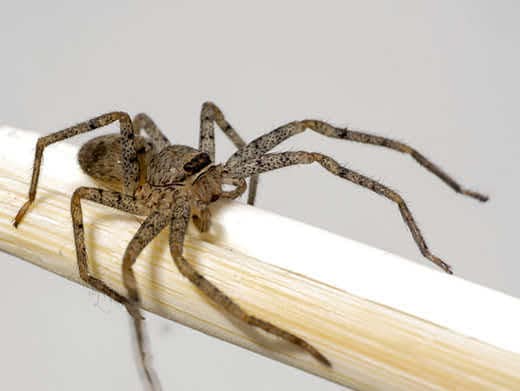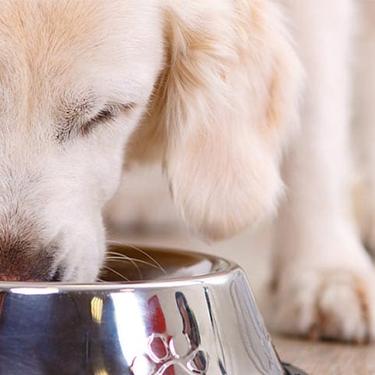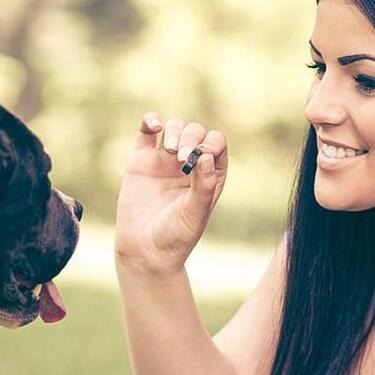
-
Find the right food for your pet
Take this quiz to see which food may be the best for your furry friend.
Find the right food for your pet
Take this quiz to see which food may be the best for your furry friend.
Featured products
 Adult Healthy Cuisine Roasted Chicken, Carrots & Spinach Stew Dog Food
Adult Healthy Cuisine Roasted Chicken, Carrots & Spinach Stew Dog FoodDelicious roasted chicken paired with tender vegetables in a succulent stew
Shop Now Small & Mini Savory Stew with Chicken & Vegetables Dog Food
Small & Mini Savory Stew with Chicken & Vegetables Dog FoodA delicious complement to the nutrition of Science Diet Small & Mini 7+ dog food
Shop Now Adult 7+ Perfect Digestion Chicken, Whole Oats & Brown Rice Recipe Dog Food
Adult 7+ Perfect Digestion Chicken, Whole Oats & Brown Rice Recipe Dog FoodScience Diet's breakthrough nutrition supports ultimate digestive well-being & healthy microbiome for dogs age 7+
Shop NowFeatured products
 Adult 7+ Tender Tuna Dinner Cat Food
Adult 7+ Tender Tuna Dinner Cat FoodWith delicious chunks in a decadent gravy
Shop Now Adult Savory Entrée Can Variety Pack Cat Food
Adult Savory Entrée Can Variety Pack Cat FoodPrecisely balanced nutrition with the delicious taste of savory minced chicken to help fuel the energy needs of cats during the prime of their life
Shop Now Adult 7+ Senior Vitality Chicken & Vegetable Stew Cat Food
Adult 7+ Senior Vitality Chicken & Vegetable Stew Cat FoodImproves Everyday Ability to Get Up & Go
Shop Now -
Dog
- Dog Tips & Articles
-
Health Category
- Weight
- Food & Environmental Sensitivities
- Urinary
- Digestive
- Joint
- Kidney
-
Life Stage
- Puppy Nutrition
- Adult Nutrition
- Senior Nutrition
Cat
- Cat Tips & Articles
-
Health Category
- Weight
- Skin & Food Sensitivities
- Urinary
- Digestive
- Kidney
-
Life Stage
- Kitten Nutrition
- Adult Nutrition
Featured articles
 Why Are Dogs and Cats So Cute?
Why Are Dogs and Cats So Cute?If waggy puppy dog tails and furry kitten yawns make you swoon, you're not alone. Why are cats so cute? And, dogs too! Let's find out!
Read More Does My Pet Hate Me?
Does My Pet Hate Me?Learn tips for bonding with your pet if you've ever thought, 'My dog doesn't like me, or 'Why do I have a standoffish cat?'
Read More Do Dogs and Cats have Belly Buttons?
Do Dogs and Cats have Belly Buttons?Learn whether cats & dogs have belly buttons like humans, what the function is, and if there are any health concerns associated with it.
Read More -


The brown recluse spider may be uniquely attractive to spider-watchers, but if you're a dog parent, you'll want to be extra careful when it comes to this arachnid. A brown recluse bite on a dog tends to be painful and possibly dangerous. What's more, clinical signs of a brown recluse spider bite in dogs can be hard to identify — particularly, early on. Let's take a closer look at what these spiders do and how to help your dog if they've been bitten.
Identifying a Brown Recluse Spider
As its common name suggests, this spider is brown in color and generally reclusive. As noted by the Merck Veterinary Manual, the distinctive "violin-shaped marking" on this spider's cephalothorax (upper body) is one of few features that makes this spider identifiable. However, this reclusive spider typically doesn't hang around long enough for a positive ID.

The brown recluse tends to avoid humans and dogs, whenever possible, but will bite when disturbed. Measuring 1 to 1.8 centimeters in length from the tip of its tiny head to the end of its bulbous abdomen, with longer legs measuring 2 to 3 centimeters, this creature's bite is notoriously destructive to the skin of both humans and dogs. The poison this spider wields is considered a formidable venom. While it can be merely painful at the outset, it can lead to tissue death and ulceration, sometimes in an area several times larger than the spider itself.
The brown recluse spider can be found in a wide geographic range. It lives in the Midwest section of the U.S., from Colorado and New Mexico in the west to Northern Georgia in the east. It also lives throughout southern portions of the U.S. and up the Mississippi into Wisconsin.
Recognizing the Clinical Signs of a Brown Recluse Bite
While the bite is somewhat distinctive, clinical signs of a brown recluse spider bite in dogs may initially be mistaken for a wide variety of other bites and stings. Your dog may also show no clinical signs that they were bitten or display non-specific signs, such as limping or shaking.
Clinical signs of a brown recluse spider bite in dogs include the following:
- Mottled and reddened skin in the form of a "bullseye" lesion
- Deep ulcers on the skin
Less common signs of a brown recluse bite on a dog include systemic effects from the venom, including:
- Fever
- Shaking
- Rashes
- Lethargy
- Weakness
- Nausea
Some dogs may also experience damage to red blood cells, which can lead to anemia and hematuria (blood in the urine). This typically occurs within the first 24 hours after a brown recluse bite on a dog. While rare, the venom of a brown recluse can enter a dog's bloodstream and lead to renal failure, gangrene, blood clotting problems and dangerously severe destruction of red blood cells.



Tasty Tips
Diagnosing a Brown Recluse Bite on a Dog
Due to the localized pain or itchiness of the lesion, most dog parents will observe the bite early on in the process. Veterinarians will usually home in on the bitten area and may have to shave the fur around it to observe any telltale signs.
Initially, other bites — including the bites of ticks, scorpions, other spiders, dogs, cats and wildlife — can sometimes be mistaken for this bite. Once the characteristic bull's-eye and eschar appear and underlying tissue sloughing takes place, however, a spider bite (if not specifically a brown recluse bite) is the inevitable suspicion.
In some cases, brown recluse bites can cause variations in red blood cells, certain white blood cells and platelets. Blood in the urine is also a possibility. Therefore, a complete laboratory analysis can be helpful to make a definitive diagnosis.
Treating and Preventing a Brown Recluse Bite on a Dog
Treatment of a brown recluse spider's bite is aimed at treatment of the lesion itself. Antibiotics, pain relievers, corticosteroids and topical treatments to maintain hygiene, relieve pain, and limit both inflammation and infection are the mainstays of treatment.
Early on, cold packs can be helpful. Dapsone is considered the medication of choice to lessen the local and systemic effect of these bites, but it must be administered early in the process. Recovery can be slow if severe tissue damage has occurred — several weeks, at least. Surgical intervention may be required to remove necrotic or infected tissues as their presence can delay healing. This is especially crucial when gangrene is a serious possibility.
Preventing brown recluse bites on a dog should be aimed at limiting your pet's ability to root in the underbrush off of hiking paths or while camping in the wilds of areas known to be home to these spiders. If you live in an area where brown recluse spiders are native, or you notice clinical signs of a brown recluse spider bite in dogs, contact your vet immediately to get the care your dog needs.


Dr. Patty Khuly is an award-winning veterinarian known for her independent thinking, her spirited pet advocacy, her passion for the veterinary profession, and her famously irreverent pet health writing.
Dr. K is an honors graduate of both Wellesley College and the University of Pennsylvania School of Veterinary Medicine. She received her MBA at The Wharton School of Business as part of the prestigious VMD/MBA dual-degree program. She now owns Sunset Animal Clinic, a veterinary practice in Miami, Florida.
Related products
Related articles

Learn about choosing the right dog food to help ensure your adult dog will receive the correct balance of nutrition.

Learn how today's wet dog food blends have gotten a face lift, and how you'll provide your dog the nutrition he needs in the form he loves.

Learn the the dangers of feeding your dog chocolate, which types are most dangerous, and what to do if you discover that they have consumed chocolate.

Proper nutrition for your pregnant or nursing dog is vital to her and her puppy's health. Learn what you should do provide her with the proper nutrients.

Put your dog on a diet without them knowing
Our low calorie formula helps you control your dog's weight. It's packed with high-quality protein for building lean muscles, and made with purposeful ingredients for a flavorful, nutritious meal. Clinically proven antioxidants, Vitamin C+E, help promote a healthy immune system.
Put your dog on a diet without them knowing
Our low calorie formula helps you control your dog's weight. It's packed with high-quality protein for building lean muscles, and made with purposeful ingredients for a flavorful, nutritious meal. Clinically proven antioxidants, Vitamin C+E, help promote a healthy immune system.

